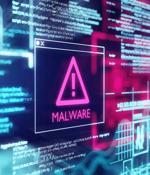Security News

DMARC can prevent spammers from using a trusted domain name to send junk mail, a useful tactic for the presidential campaigns and for your organization, according to security provider Valimail.

Agari's Cyber Intelligence Division, which concentrates on email threat investigations, has found that 60% of employee-reported suspect emails are false positives. Wire transfer scams also increased from 19% to 22%, while payroll diversion scams fell from around 25% to 16%. There is another shift within the fraudulent emails.

DMARC can prevent spammers from using a trusted domain name to send junk mail, a useful tactic for the presidential campaigns and for your organization, according to security provider Valimail. Owners of legitimate domains can protect their names from being spoofed in junk mail through Domain-based Message Authentication, Reporting & Conformance, a type of authentication that verifies email messages by checking the sender's domain.

More specifically, of the 15 current candidates, eight now protect their domains from email spoofing with enforced DMARC. In May 2019, when there were still 23 candidates, only three were protected by DMARC. DMARC works with two other email standards to give domain owners control over which senders are allowed to send messages 'as' them. Today, three domains have no DMARC, while four more have unenforced DMARC. Although running DMARC in 'unenforced' mode is often an indication that DMARC is in process of implementation, for so long as it is unenforced, there is no protection.

Most counties are not protected from impersonation-based spearphishing attacks.


Of the 200 schools in the report, the University of Pittsburgh and Georgetown University received top marks, with their DMARC policy set to "reject."

More companies than ever are adopting new email security methods, like DMARC, but few actually put them to full use.

Standard email authentication to prevent spoofing and phishing remains elusive for most.

By implementing DMARC, brands lower the odds of their domains being spoofed and used for phishing attacks on recipients. Still, 79.7% of all domains analyzed have no DMARC policy in place,...